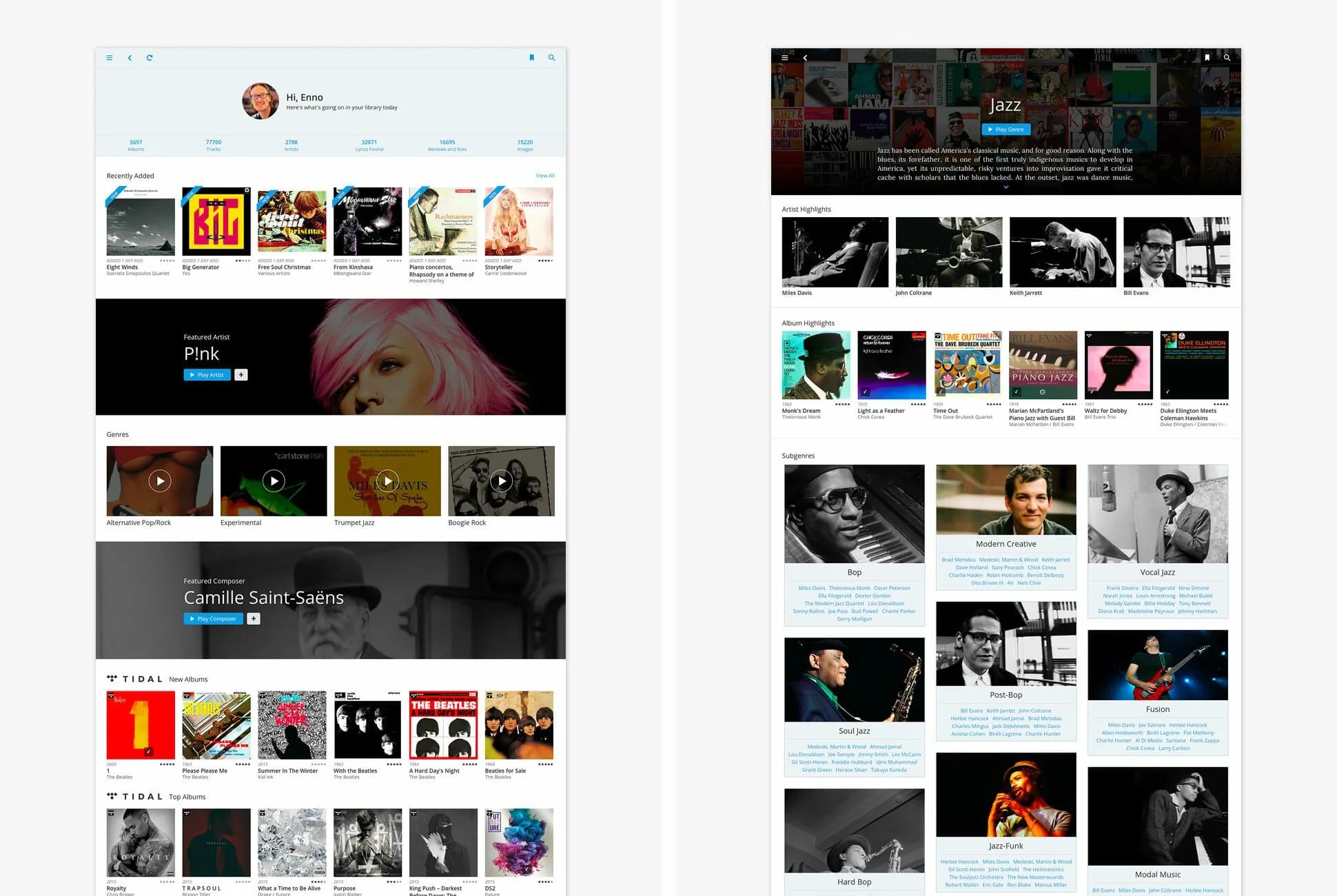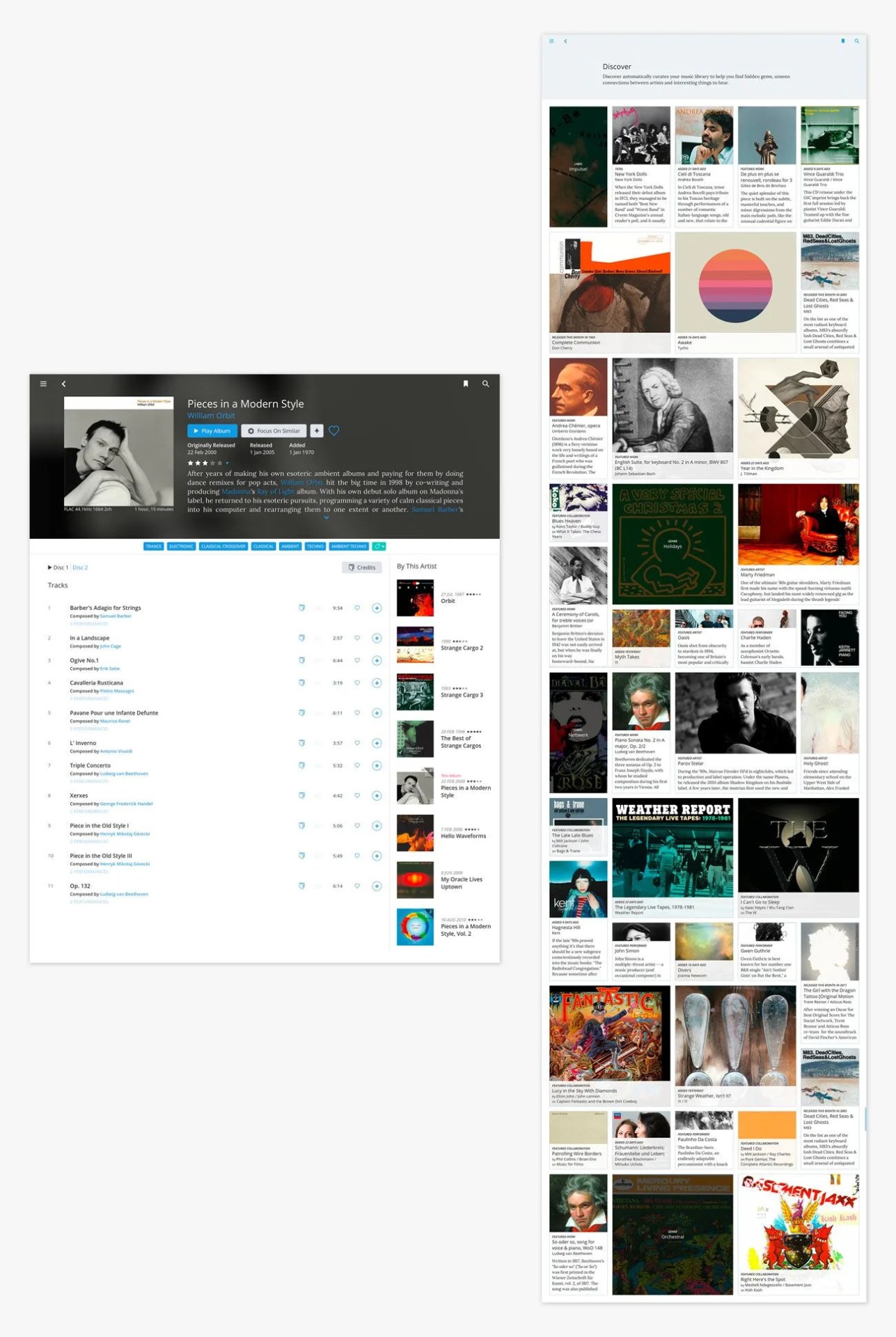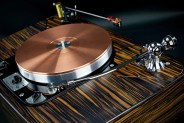If you’ve been buying CDs for more than thirty years, there is a good chance that your investment in both music and hardware (and media furniture) has not been a small one. Roon is also not an inexpensive investment, but it’s arguably the world’s best digital music management and playback platform — and we’re a little obsessed with it.
The last time my family moved, the 2,000+ CDs in our collection required over a dozen large boxes to transport and the process was not kind on my back. Frustrated with having to reorganize and reshelve every CD purchased since 1984, we made the decision to toss all of the jewel cases; they lacked the mystique and tangible satisfaction of vinyl album covers, plus they just took up too much space. We went on to organize the CDs in static-free sleeves, but then came to the realization that other than saving shelf space, this really didn’t make listening to the CDs any easier.
Computer-based audio servers were not really a thing in 2003; audiophiles tend to be early adopters of unproven technology at great expense, but a brand-new Apple Mac Mini backed-up with an external LaCie hard drive became our CD player. iTunes was not the only game in town as far as CD ripping was concerned, but if you lived in the Apple ecosystem, it became your digital playback platform.
iTunes offered the option to rip CDs in WAV, AIFF, Apple Lossless, MP3, and AAC; and being an audiophile I swore to never use anything but WAV or AIFF. iTunes was above average when it came to metadata, sourcing its album information from Gracenote, but it was hard to change mistakes, and it failed miserably when trying to read albums from obscure labels or your own CD mixes.
Being locked into the iTunes Music Store was an immediate red flag as it offered zero access to the first generation of audiophile download stores. Having to purchase from 3rd-party sites, download and then transfer over to iTunes wasn’t convenient, either. For me as a consumer, the advent of digital streaming services was the last nail in the iTunes coffin. With over 2,000 CDs, 300 downloaded albums and subscriptions to Tidal, Qobuz, and Spotify, I needed one comprehensive platform to host all of my digital music, offer updated editorial content, and it needed to work with the myriad of digital streaming devices in our home. The only platform that came close is Roon.
The Roon Story
The Roon team has been in the digital music space for many years. Back in 2006, the team launched a product called Sooloos, which was a high-end audio digital audio management and playback platform. Sooloos was not inexpensive; the earliest versions of the platform ran into the thousands of dollars as a consumer product and the company was eventually sold to Meridian Audio, who has been the leading force behind the adoption of MQA by the streaming services and hardware vendors such as LG who have adopted it for their smartphones.
The original Roon team moved onto Hewlett Packard to create HP Connected Music. From there, they decided to create their own music player software and launched Roon in 2015. The goal was to create a music player that told you more than just track and album information, but actually gave context to your favorite artist and albums. Thus, Roon uses metadata to display bios, album reviews, credits, concert dates and lyrics. The entire experience was designed around your personal musical tastes, but it also helps you discover new music much more easily.
Roon’s GUI is second-to-none; on a computer screen, tablet, or smartphone. If your music server/laptop has an HDMI output, you can transmit the image to your HDTV and see your entire music library on a larger screen.


